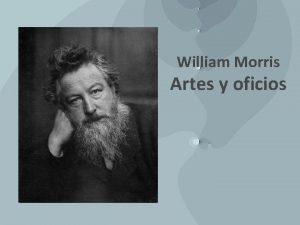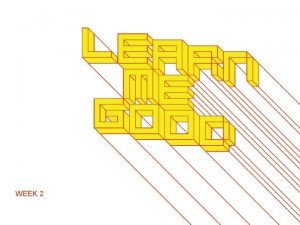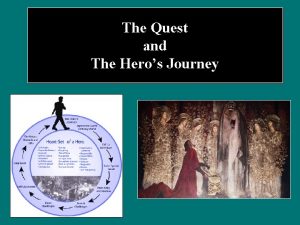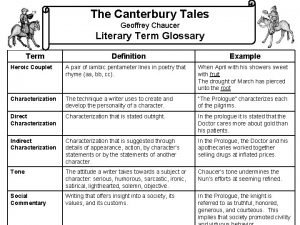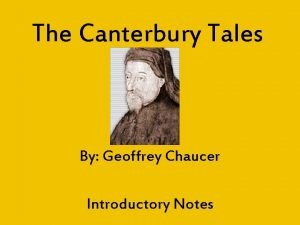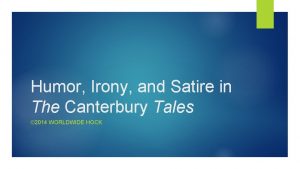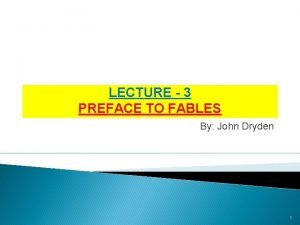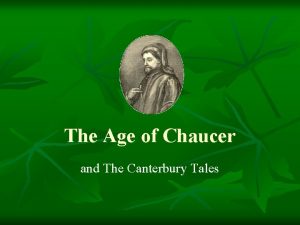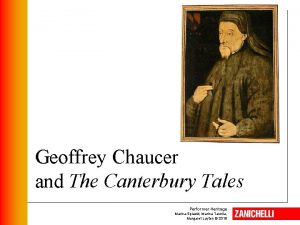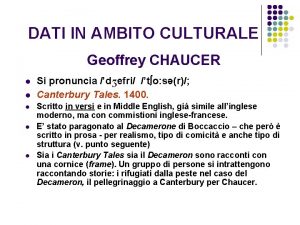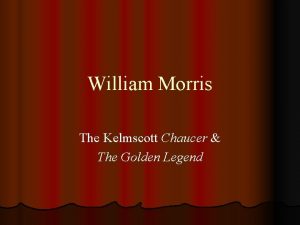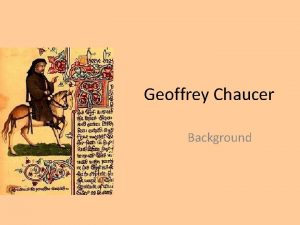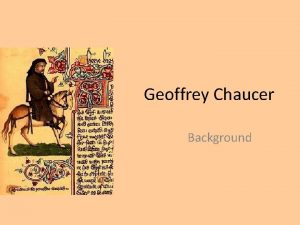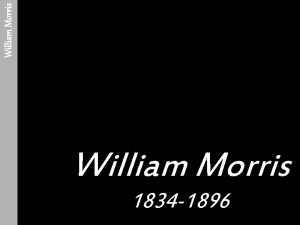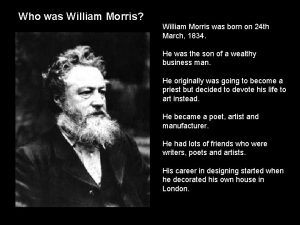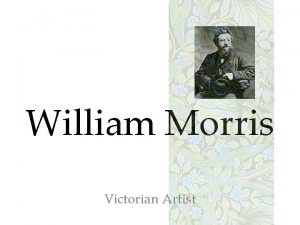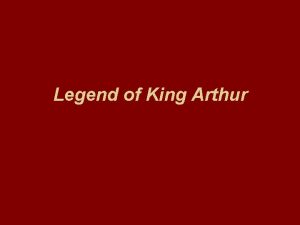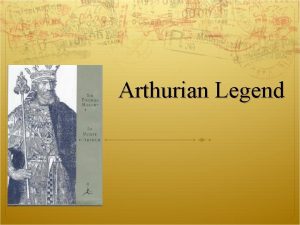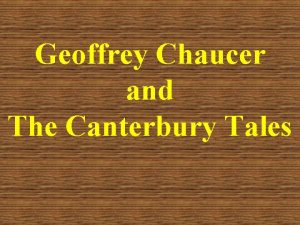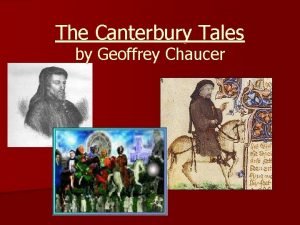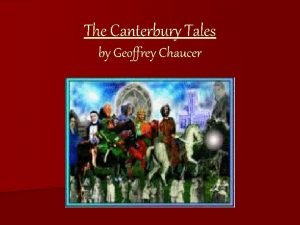William Morris The Kelmscott Chaucer The Golden Legend


















- Slides: 18

William Morris The Kelmscott Chaucer & The Golden Legend

Pre-Raphaelite Art l Characterized by naturalism (love of nature), wealth of detail, deliberate medievalism (choice of subject), morbidity/ melancholy subjects, & ornamental/ decorative function l “A definite, harmonious, conscious, beauty… It ought to be possible for a painting to be a part of a beautiful whole in a room or church or hall. ”

William Morris (1834 -1896) l Poet, artist, printer, typographer, decorator, Socialist--- a man of many talents l Morris always had an affinity for nature, a vital component to pre-Raphaelite art

William Morris (1834 -1896) l Attended Marlborough School and Exter College at Oxford l Worked with Dante Rosetti and Burne-Jones, among others, creating art in 19 th century England l Formed the “Pre-Raphaelite Brotherhood” or PRB

William Morris --- Oxford Years l Brotherhood was greatly influenced by the writing of John Ruskin l Like Ruskin, Morris believed in Antimodernism l Believed only great art came before 16 th century, looked to earlier times for inspiration l Saw Modernist thinkers as “servants to the industrial age”

William Morris --- Oxford Years l A creator & contributor of Oxford and Cambridge Magazine l Published “Defense of Guenevere and Other Poems” in 1958

William Morris --- Career Move l When Victorian Architect Philip Webb constructed The Red House in Bexley, he was unable to find any furniture to his liking l As result, Morris and friends (Rossetti, Burne. Jones, Webb) founded Morris, Marshall, Faulkner & Co.

William Morris --- Career Move l M, M, & F created furniture, tapestries, wallpaper, stained glass, and other interior decorative elements l This company sparked Morris’ interest in architecture and established his career in the field l Would later found The Society for the Protection of Ancient Buildings in 1877

William Morris --- Typographer? l Towards the end of his life, Morris became involved in printmaking and book design l Uncertain as to why exactly he took an interest in this field but Morris was thought to have been inspired by a printing lecture given by Emery Walker

William Morris --- Typographer l Founded the Kelmscott Press in spring of 1891, a privately owned printing press dedicated to printing the “ideal book” l Came up with several revolutionary typefaces which he used to print his books --- Golden Roman, Gothic Troy, & Chaucer typfaces

William Morris --- Typographer? l Believed books should be readable and beautiful l To do so, used an iron handpress, unbleachced handmade paper, high-quality vellum, and bindings from Henry Band

William Morris’ Great Works l Printed work characterized by darker, more massive typefaces, less spacing between words and lines, complementary illustrations, ornaments, borders, and initials l Elements can be seen in both The Golden Legend and Chaucer

The Golden Legend l l Printed at Kelmscott Press in 1892, The Golden Legend was the 7 th book Morris printed 13 th manuscript about the lives of saints Was supposed to be the 1 st book published at Kelmscott (named after the typeface Golden) but was actually the 7 th The Golden Legend is a display of the Golden typeface and includes ornamental borders (Morris) and wood-cut illustrations (Burne-Jones)

The Golden Legend

The Kelmscott Chaucer l “Widely regarded as the greatest fine press book ever produced, particularly in its text-onvellum incarnation. ” l Morris’ print of The Works of Geoffrey Chaucer somewhat resembles what Morris had in mind when he strived to create the “ideal book”

The Kelmscott Chaucer l Book includes illustrations, ornamentation, and the Chaucer typeface, appropriately named after the book itself l Produced in 1891 l Morris died in late 1896, just a few months after Burne-Jones completed the illustrations and finished the book

The Kelmscott Chaucer

The Legacy of William Morris l William Morris and His Circle is an exhibit at the Harry Ransom Center on The University of Texas campus l The exhibit contains over 75 pieces --- Morris’ manuscripts and other Kelmscott Press publications l The exhibit also displays the work of other PRB members like Rosetti and Burne-Jones
 Golden type william morris
Golden type william morris Wallpaper - hyacinth, pattern #480
Wallpaper - hyacinth, pattern #480 Morris art nouveau
Morris art nouveau The nature of gothic william morris
The nature of gothic william morris Sacrament of the last supper golden ratio
Sacrament of the last supper golden ratio Modified fibonacci sequence
Modified fibonacci sequence The wife of bath's tale plot diagram
The wife of bath's tale plot diagram Oedipus hero's journey
Oedipus hero's journey Chaucer glossary
Chaucer glossary Geoffrey chaucer notes
Geoffrey chaucer notes Irony in canterbury tales
Irony in canterbury tales Preface to the fables
Preface to the fables Age of chaucer
Age of chaucer Geoffrey chaucer performer heritage
Geoffrey chaucer performer heritage Chaucer pronuncia
Chaucer pronuncia Knuth morris pratt pattern matching algorithm
Knuth morris pratt pattern matching algorithm Knuth morris pratt algorithm time complexity
Knuth morris pratt algorithm time complexity Cop4
Cop4 M morris mano
M morris mano

